So, the humble 555 timer started its live as a bipolar IC. Technology progressed and CMOS type 555 timer chips are available now.
The fastest one I could find is the Microchip “IttyBitty” MIC1555.
My quest is to find out how fast it can really go.
The MIC1555 can be used in astable oscillator configuration and the datasheet specifies a maximum frequency of 5 MHz with a 1 KOhm resistor and 47 pF capacitor. 
I built up the circuit on a tiny breadboard to minimize those pesky parasitic capacitances (not that I think it really made a difference). 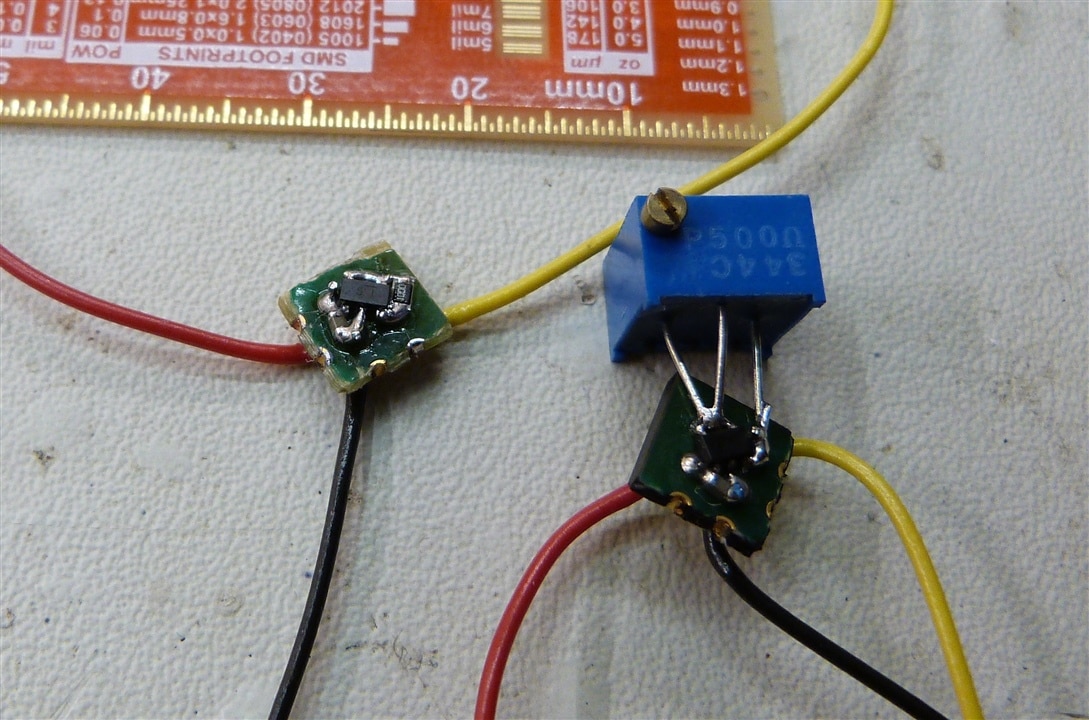
With 1 KOhm and 47 pF I did a voltage sweep in the recommended operation range from 2.7 V to 18 V and beyond the the absolute maximum rating of 22 V. Turns out I already get 8.43 MHz at 6 V as a maximum frequency. Successively reducing the resistor and capacitor values to 0 Ohm and open circuit instead of a capacitor increased the frequency further to 9.75 MHz at about 6V. Interesting side note, that the frequency reaches a minimum at the specified max operation frequency of 18 V and increases again when going higher than that inside the absolute maximum range.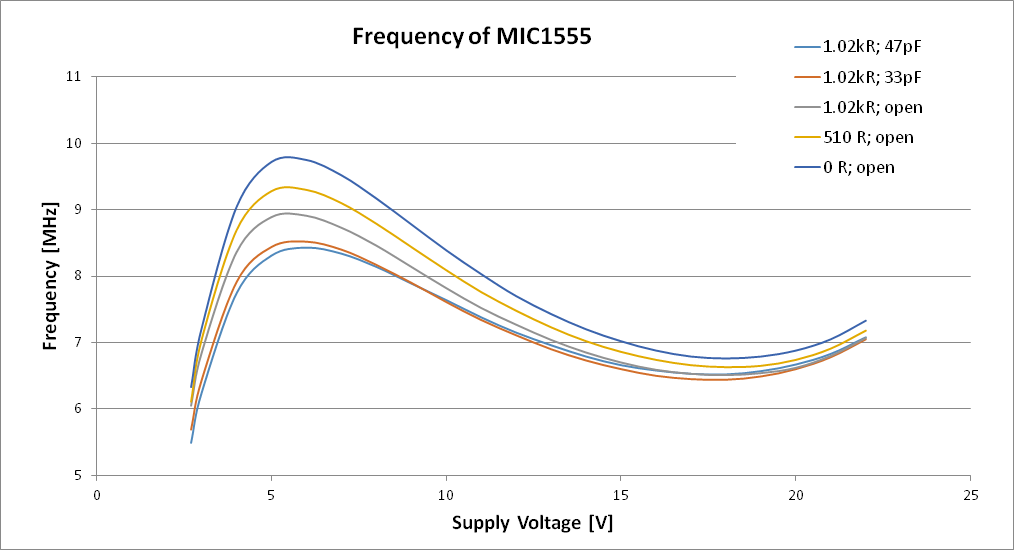
I also recorded the current draw and duty cycle for all test setups. No surprises there, the current increases with the voltage and the duty cycle decreases. 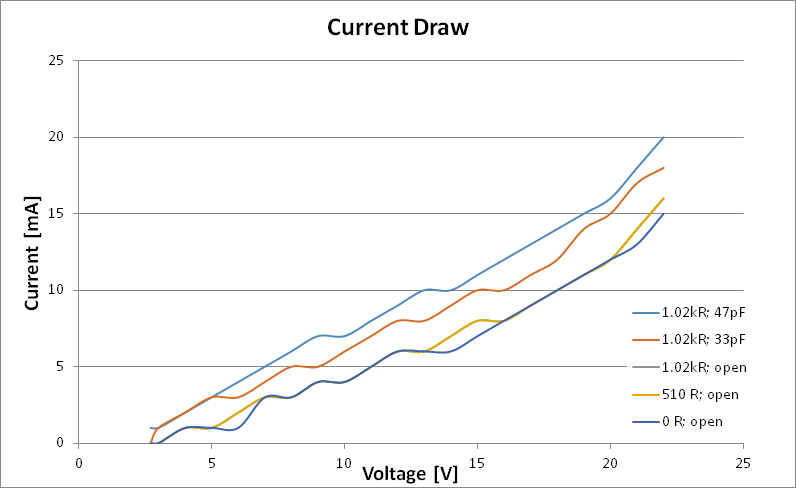

And for everybody's enjoyment, here is a full voltage sweep captured on video.
Now I am trying to push the limits even further. Overclocking often needs better cooling and increasing the operation voltage.
The coldest temperature I can easily get to in my house is the freezer with -16 °C. Sticking the circuit in there and doing the voltage sweep again brought some improvement to 9.98 MHz at 5V and fine-tuned to 5.3 V got me to 10.01 MHz; above the desired 10 MHz margin twice the specified value in the datasheet.
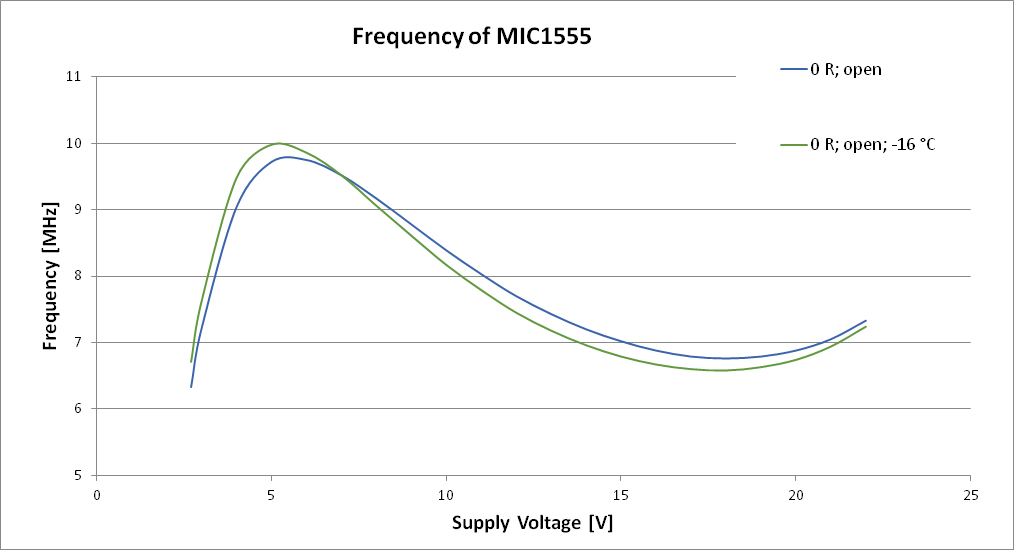
I saved the overvoltage experiment for last as it might turn out fatal for the tiny little fellow. In fact I was determined to crank up the voltage until certain death. Sorry 555.
It did not take much. Back on the bench at room temperature the MIC1555 burnt out above 24V, but with encouraging results of 8.24 MHz sharply increased from the value at 23 V. So with a proper heat sink at low temperatures, it might survive longer at even higher voltages. At 24V it was drawing 35 mA and dissipating a whopping 0.84 W. I was recording the high voltage test live on video and I could argue that it did die ozcillating at 10.6 MHz, if the fequency measurement is assumed to still be correct from the the previous frame on the screen.
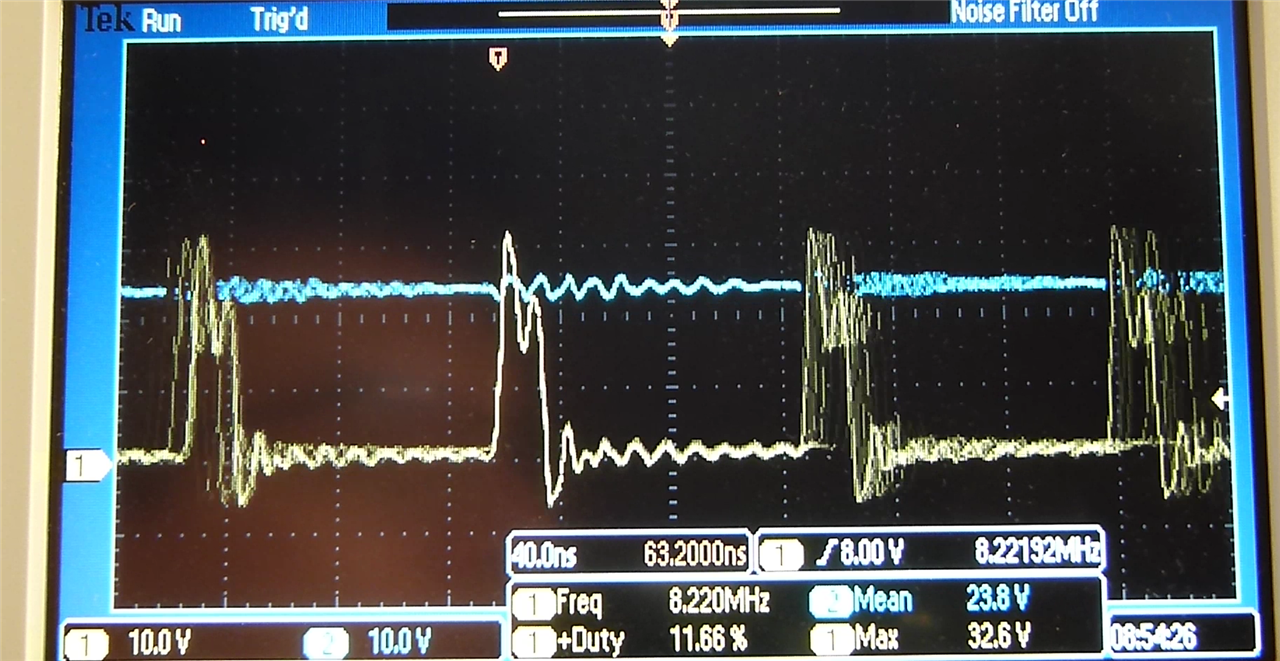

Conclusion:
The 555 works well beyond the specified values and I had fun doing the measurements.

Top Comments